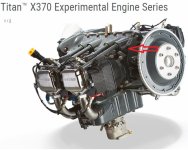Titan XIO 360 135 hr TT. My oil pressure at start (cold) is 55psi. In cruise at 188 degrees oil temp it is steady at 45psi. Upon landing it drops to 11-15 psi at 1krpm. I had previously adjusted the pressure regulator 1 full turn which placed it about 1/2 its full travel which resulted in no change in readings. I adjusted it again 2 full turns (castle nut marked) which put the adjustment pin at about 3/4 travel. After flying yesterday the result was no change in the pressure readings. I'm running Phillips XC 20w50 with 6 qt in the sump.
Anyone have any idea what might be going on.
Anyone have any idea what might be going on.
Last edited:





